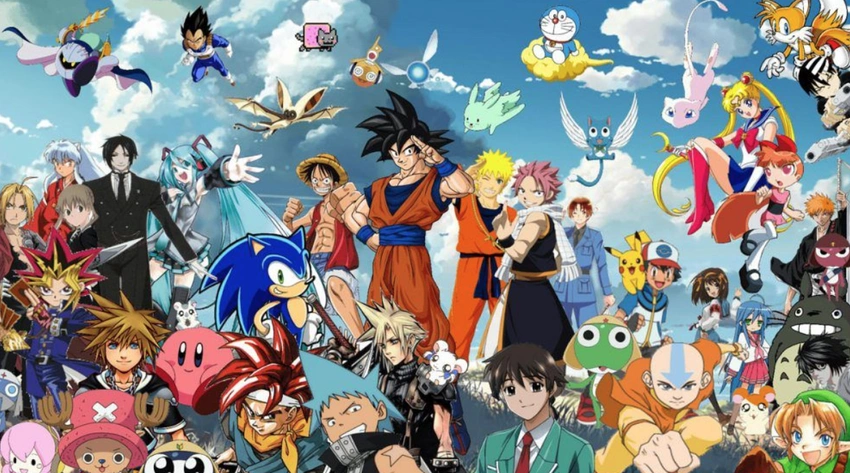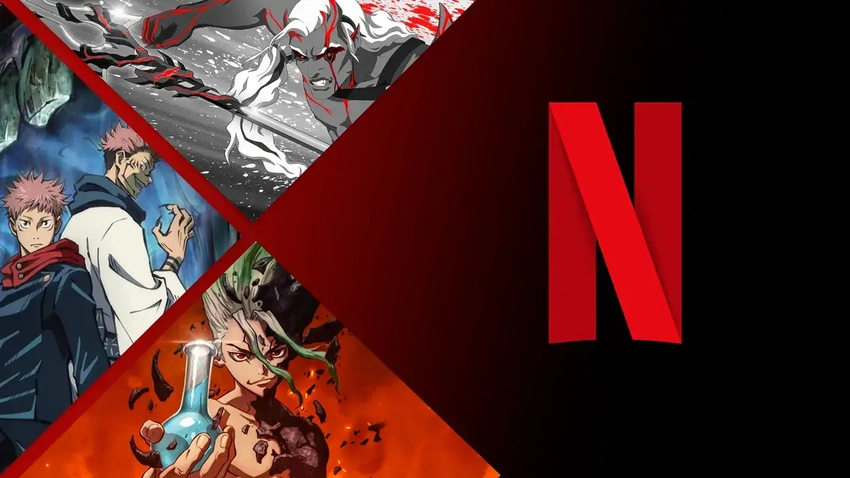Anime is among Gen Z's top entertainment choices. With its daring storytelling, colorful animation, and emotionally delicate characters, this once-niche Japanese genre has now transformed into a worldwide sensation, winning millions of fans. Compared to conventional Western cartoons, anime frequently explores deeper into themes like social justice and mental health, which appeals particularly to a generation that longs for connection and authenticity.
Anime is now more than just a part of Japanese culture, it has shaped Gen Z's language, fashion, values, and worldview. Let's examine the classic television programs and motion pictures that have influenced this cultural revolution and delve into the true meaning of anime.

What is Anime?
Anime is instantly linked to a particular animation style in Western nations. a distinctive Japanese television show or movie with adult themes and plots that appeals to a specific demographic. But as soon as you begin to explore the world of Japanese anime, you'll discover that there is a wide variety of stories and genres to suit practically every kind of person.
In a nutshell, the Japanese describe it as any kind of animation for children or adults, domestically or abroad. Even Cartoon Network's animated shows are considered anime by the Japanese, who may use the term interchangeably for comic books or other entertainment because it has become so ingrained in their culture.

The use of dramatic panning and striking, eye-catching colors to bring action to life is another distinctive feature of anime. It's remarkable how they manage to even create appealing cartoon characters, and even the slightly older anime films with simpler artwork manage to look brand new.
What Made Anime so Popular Within Gen Z?
Gen Z wasn't just introduced to anime; they were deeply engrossed in it. Anime delves deeply into emotions and real-life issues like loneliness, identity, and anxiety, in contrast to many other shows. This generation was genuinely moved by that level of candor. In addition, the characters genuinely develop and change over time, the storylines are captivating, and the animation is visually stunning.

Anime is now very accessible thanks to streaming services like Crunchyroll and Netflix. Additionally, fans began sharing edits, cosplay, memes, and artwork on social media, creating a sense of global community. Gen Z views anime as more than just a visual medium. It's something to experience, identify with, and participate in.
Let's See What The Gen Zs Have to Say
When I asked my brother and his friends about anime and manga comics, they got interested and agreed to a chat with me on this topic.
First, I asked that how they got to know about Anime and manga series. They said, "When we were young, we used to see Pokémon on Cartoon Network. Gradually, we got engaged with the content and the characters, and it felt nice when we watched together with our friends".
As, am also an anime fan, I asked them what was the first-ever anime that they saw in their childhood.

My brother exclaimed, "Dragon Ball Z". Also, his friends exclaimed, "Prithush made them watch the anime as we were never fond of it. Slowly, we also got interested and we started watching it as well".
To be honest, I felt a little bit proud because, why not, my brother is following my path so, I was happy when I heard them. And they certainly got engaged with themselves, talking about the next series of the anime called "Demon Slayer", and I gradually stepped a side.
Fashion, Fandoms, and Filters
Anime culture can be seen everywhere from Tokyo to Times Square. Gen Z influencers use character-inspired makeup, anime-themed attire, and TikTok and Instagram filters.

Luxury fashion brands like Gucci and Louis Vuitton have subtly incorporated anime aesthetics into their latest campaigns, according to a Vogue Business article. Digital models that resembled anime avatars paying homage to the visual aesthetic of the genre.
Additionally, popular TikTok or Instagram trends include "cosplay transformations" and "anime core."
It Became a Commercial Cash Machine
The anime business is not limited to films and TV series; it also includes a vast array of products, such as games, toys, clothing, and much more. For Gen Z, anime is a way of life. It proves that there is a wide ecosystem rather than just one category that appeals to younger audiences.

Pokémon is an excellent example of how anime became a cultural phenomenon, particularly among Gen Z, utilizing a variety of media and products to immerse users in a new world. A computer game at first, this multimedia franchise became well-known throughout the world and gave rise to manga series, anime adaptations, card games, live-action films, theme parks, music, and even original soundtracks, elements that continue to captivate Gen Z on all platforms.
To Conclude
For Gen Z, anime isn’t just about watching a show—it’s a gateway into a whole new world of self-expression, community, and creativity. From social media to fashion, anime has woven itself into almost every aspect of their lives, helping them find a sense of belonging and identity. The emotional depth, diverse stories, and themes of overcoming adversity in anime connect with the challenges Gen Z faces in their own lives.













No comments yet.